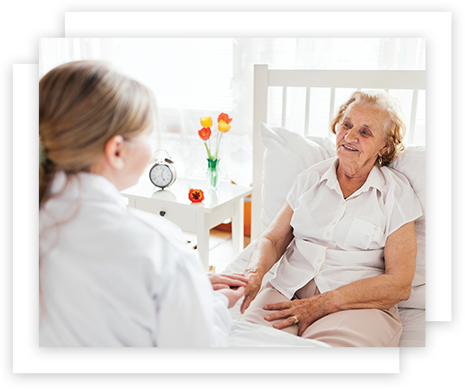Assisted Living
What is an Assisted Living Facility?
Assisted living is a type of housing designed for people who need various levels of medical and personal care. Living spaces can be individual rooms, apartments, or shared quarters. The facilities generally provide a home-like setting and are physically designed to promote the resident’s independence. Services are offered to assist residents with daily living.
The most common assisted living services offered include medication management and assistance with using the bathroom, dressing and grooming. Housekeeping, meals, laundry and transportation services, as well as social programs and activities, are typically included. Staff is available 24/7 to help with safety, care and support. Residents are encouraged to bring furniture and personal items to make their new home feel homier.
Residents are assessed when they move in, so they can get an individualized service plan to meet specific needs and make their care truly personal. Some assisted living communities are also licensed to provide memory care. These will often have separate dining rooms and menus based on residents’ nutritional needs.
There are more benefits to assisted living than simply getting a helping hand. It can actually make the quality of life significantly better for the person needing assistance, and can make life easier for the main caregiver (usually a loved one).


What’s an Assisted Living Community Like?
There are almost 29,000 assisted living communities in the U.S. today, so there’s a community to fit just about every preference. While the types of assisted living settings vary from high-rise apartments to multi-acre campuses and everything in between, the approach is the same: treat all residents with dignity, provide privacy and encourage independence.
How do I know if Assisted Living is right for my loved one?
Making the decision to place a loved one in an Assisted Living Facility can be one of the most difficult decisions you can make. Unfortunately, families sometimes wait too long to make the decision and the person’s needs have moved beyond what an ALF can provide and would now need to go into a Nursing home. Even worse, the in-home care giver, usually a spouse, dies leaving the family with no alternative. Spouses tend to take on way too much in an effort to keep their husband or wife at home with them. In fact over 60% of spouses providing in home care pass before their partner.
In most cases the care and socialization an Assisted Living Community can provide will greatly increase your loved one’s quality of life as well as any full-time caregiver.
Here are ten signs your loved one may need help:
- The yard and house aren’t being taken care of.
- The inside of the house becomes uncharacteristically cluttered, disorganized or dirty.
- There’s a stack of unpaid bills.
- They seem disheveled, or their hygiene has suffered.
- There’s a lack of fresh, healthy food in the house.
- There’s been a change in their general mood, or they’ve lost interest in hobbies and activities.
- They’ve been forgetting to take their medications or get prescriptions filled.
- You notice unexplained bruising, which could indicate they’ve been falling.
- They’ve become more forgetful, perhaps missing important appointments.
- They’ve noticeably gained or lost weight.

